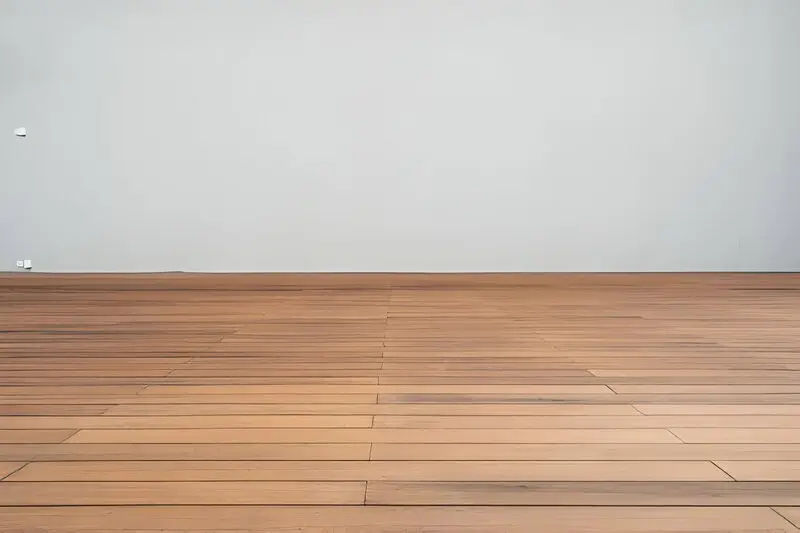Can you put two different wood floors next to each other?

wood floors
Wood floors are the epitome of timeless elegance in interior design. Their warmth, durability, and aesthetic appeal make them a favorite choice among homeowners and designers alike. So what happens when you want to change things up a little?? Can you put two different wood floors next to each other? In this extensive guide, we’ll explore this question in depth, considering the various factors involved and providing expert tips for achieving a seamless transition between different wood flooring types.
Understanding the Appeal of Wood Floors
Wood floors have been a staple of interior design for centuries, and for good reason. Their natural beauty adds warmth and character to any space, while their durability ensures longevity and value for homeowners.
From the classic charm of oak to the exotic allure of teak, there’s a wood species to suit every taste and style preference. Moreover, technological advancements have led to a wide range of wood flooring options, including solid hardwood, engineered hardwood, laminate, and luxury vinyl plank (LVP), each offering unique benefits and characteristics.
Exploring Different Types of Wood Floors
Before we delve into the compatibility of different wood floors, let’s take a closer look at the various types available:
- Solid Hardwood: Crafted from a single piece of hardwood, solid wood floors are renowned for their timeless beauty and exceptional durability. They can be sanded and refinished multiple times, making them a long-term investment for your home.
- Engineered Hardwood: Comprising multiple layers of wood veneers bonded together, engineered hardwood offers enhanced stability and resistance to moisture. It’s an excellent choice for areas prone to fluctuations in temperature and humidity, such as basements or kitchens.
- Laminate Flooring: While not real wood, laminate flooring mimics the look of hardwood with a photographic layer sealed beneath a protective wear layer. It’s a budget-friendly alternative that offers easy installation and low maintenance.
- Luxury Vinyl Plank (LVP): With advancements in technology, luxury vinyl plank flooring replicates the look and feel of hardwood with remarkable realism. It’s waterproof, durable, and available in a wide range of styles, making it a popular choice for kitchens, bathrooms, and high-traffic areas.
Considering Compatibility
Now, let’s address the burning question: Can you put two different wood floors next to each other? The short answer is yes, but there are several factors to consider to ensure a seamless integration:
- Wood Species and Grain Patterns: When combining different wood floors, consider the species and grain patterns of each type. Opt for woods with complementary tones and textures to create a harmonious transition between spaces. For example, pairing oak with maple or walnut with cherry can result in a visually appealing contrast.
- Color and Finish: Consistency in color and finish is crucial for achieving a cohesive look when blending different wood floors. Choose stains and finishes that complement each other, ensuring a seamless flow throughout your home. If necessary, enlist the expertise of a professional to achieve the desired color matching and blending.
- Transition Strips: In areas where two different wood floors meet, transition strips can provide a clean and polished look while bridging the gap between the surfaces. These strips come in various materials, including wood, metal, and laminate, allowing you to customize the transition to suit your aesthetic preferences.
- Direction of Installation: Pay attention to the direction in which the wood planks are installed, as it can affect the overall visual continuity of your floors. To create a seamless transition, align the planks of both flooring types in the same direction or consider using a border or decorative pattern to delineate between them.
Practical Considerations
In addition to aesthetics, there are practical considerations to keep in mind when blending different wood floors:
- Maintenance: Different wood species and flooring types may require varying levels of maintenance and care. Be sure to follow manufacturer guidelines for cleaning and maintenance to preserve the beauty and longevity of your floors.
- Natural materials, such as wood, expand and contract in response to variations in humidity and temperature. When installing two different wood floors next to each other, allow for proper expansion gaps and acclimatization to minimize the risk of warping or buckling over time.
- Professional Installation: While DIY installation may be tempting, it’s advisable to enlist the help of a professional flooring installer, especially when combining different wood floors. A skilled installer can ensure precision, proper alignment, and seamless integration between the different flooring types.
Conclusion
Mixing two different wood floors next to each other is possible and can add depth and visual interest to your home’s interior design. By carefully considering factors such as wood species, color and finish, transition methods, and practical considerations, you can achieve a seamless and cohesive look that enhances the beauty of your space. So don’t be afraid to get creative and experiment with different wood flooring types – the possibilities are endless!
Wood floors are aesthetically pleasing and contribute to a healthier indoor environment. Unlike carpeting, which can trap allergens and dust mites, wood floors are easy to clean and maintain, making them an excellent choice for allergy sufferers and families with pets.
Furthermore, wood floors are an eco-friendly option, as they are a renewable resource that can be sustainably harvested and replanted. By choosing wood flooring, you’re positively impacting the environment and reducing your carbon footprint.
When selecting two different wood floors to blend together, consider the architectural style and overall design aesthetic of your home. For traditional or rustic interiors, opt for rich, warm tones and natural finishes that evoke a sense of warmth and coziness. In contrast, contemporary or minimalist spaces may benefit from sleek, understated wood floors with clean lines and neutral hues.
In addition to the visual appeal, the tactile experience of walking on wood floors adds to the overall comfort and ambiance of your home. Whether you prefer engineered hardwood’s smooth, refined feel or reclaimed wood’s rustic charm, the tactile sensation of wood flooring underfoot is unparalleled.
When it comes to maintenance, wood floors are relatively easy to care for, requiring regular sweeping, vacuuming, and occasional mopping to keep them looking their best. Avoid using harsh chemicals or abrasive cleaners, as these can damage the finish and dull the appearance of your floors. Instead, opt for gentle, pH-neutral cleaners specifically formulated for wood floors.
In conclusion, mixing two different wood floors next to each other offers endless possibilities for creativity and personalization in your home design. By carefully considering factors such as wood species, color and finish, transition methods, and practical considerations, you can achieve a seamless and cohesive look that enhances the beauty of your space. So go ahead, unleash your creativity, and transform your home with the timeless elegance of wood floors! Read more









